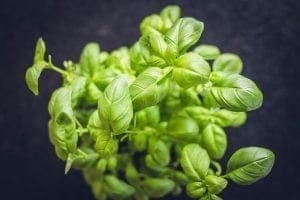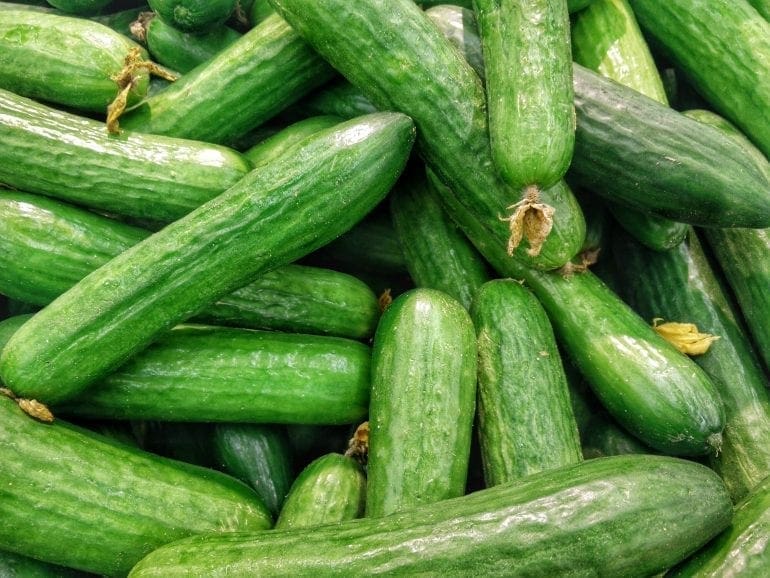If you’ve mastered the art of tie-dyeing and banana bread baking, there’s a chance you might be on the lookout for a new activity to try your hand at this summer. Enter fruit and vegetable gardening: an enjoyable, affordable and season-approved hobby that has a delicious return in the end.
With smaller amounts of yard space available throughout the Jersey City and Hoboken areas, starting to grow your own crops may seem like a stretch at first. However, Mike Giordano of the family-owned 14th Street Garden Center in Jersey City discussed all things gardening with me and suggested utilizing a patio, terrace or fire escape to house potted plants that don’t need a lot of space.
What if you do have the outdoor space, you may ask? “If you’re lucky enough to have space in the ground, I would suggest doing a raised bed,” Giordano noted. “You can even look into a planter on the ground and fill it with nice, organic soil. That’s the best way to go.”
Growing your own produce brings a sense of freshness into your diet. Homegrown crops will maintain nutrients better than those from supermarkets, since heavy transportation and longer storage time are far removed. Gardening is also a natural stress reliever, getting you outside into the sun for some vitamin-D and presenting a feeling of accomplishment once your fully-grown crops are ready for harvest.
While a green thumb doesn’t emerge overnight, Giordano assured us that there are a handful of easy-to-grow plants out there to kick off your gardening journey with, including herbs such as basil and mint leaves, tomatoes, and cucumbers—lots of crops which can be grown in pots.
We’ve broken down five of these below, including the details on where they can be planted, how long each takes to mature and the best techniques for harvesting. Happy growing!
Basil Leaves

It isn’t easy being the perfect touch to a salad or pesto recipe, but basil leaves surely make it seem so. Aside from their flavor, these herbs are also excellent for digestion and come with anti-inflammatory effects.
Basil will be ready to harvest within three to four weeks, and it’s the ideal potted plant for beginner gardeners who may not have the outdoor space for larger fruits or vegetables. A basil plant will need about six hours of sunlight each day, and requires lots of water since it grows best in moist soil.
Once the plant hits between six to eight inches in height and begins ‘leafing’ out, you can begin picking the leaves off. Make sure to continue picking them as they appear in order to help the plant continue growing.
Tomatoes

Tomatoes are a great source of vitamin-C, which helps protect skin cells and manage blood pressure. Although tomato plants take between 60 to 80 days to fully mature, they’re extremely easy to manage once they’ve been planted.
First-time gardeners will be happy to know that there’s the convenient option of purchasing ‘transplants,’ or young plants, from a garden nursery to quick-start the process. You’ll want to plant each transplant about two or three feet apart from one another in a sunny outdoor space, when both the weather and soil have hit a temperature of at least 60°.
By generously watering in the early mornings and re-soiling as your plants continue to grow, you’ll be well on your way to juicy tomatoes that can be plucked from the vine once they’ve turned completely red.
Strawberries

If spacing is a concern, strawberries are another ideal crop to grow since they can be managed as potted plants. Homegrown strawberries will also better retain their sweet flavor, since the sugar converts to starch quickly after each berry is picked.
June-bearing strawberries, one of the most common types, will give you tons of fruit as long as it receives six to 10 hours of sunlight each day and is planted in fertile soil that drains well. Similar to tomatoes, transplants can also be purchased if you don’t have the time to grow the strawberries from seeds.
It’ll take around three weeks for June-bearing strawberries to be fully-ripened and completely red all over. For harvesting, instead of plucking the berries straight from the plant, use a scissor to cut the stems to ensure the green top stays attached.
Cucumbers

While cucumbers are technically fruits from the gourd family, they’re more often recognized as vegetables. More outdoor room may be required for growing this crop, but the return promises to be a large harvest amount and minimal upkeep.
Cucumber seeds can be directly planted in a sunny location, and should be placed about six inches apart from one another. Before working with cucumbers, keep in mind that the plant will need something to ‘grow up,’ such as a lattice or fencing. Giordano recommends using tomato cages for these, noting that it creates an easy way for the plant to climb.
Cucumbers will be ready for harvest between 50 and 70 days, depending on how you plan to use them. When it comes to harvesting, you’ll want to use a sharp gardening tool to cut the cucumber from the vine to prevent any damage.
Mint Leaves

Just like basil, mint leaves are a fast-growing and plentiful herb. They complement a number of dishes and radiate a refreshing scent, so they’re quite useful plants to have handy for cooking.
Given that mint leaves send out ‘runners,’ also identified as lush green patches, it’s essential to plant them in a container, pot or in-ground space that can be controlled. These herbs grow best in the morning sun followed by afternoon shade, and if starting to grow them from a partial plant, it’ll take less than two months until they’re ready for harvesting.
Fully-grown mint leaves can be pinched from the stems. If you notice that your leaves are becoming smaller and the stems are getting longer, this is a sign to cut the plant back by half-size to encourage a regrowth of good-sized leaves.
Running enthusiast, self-proclaimed dog whisperer, and former co-star of Dwayne Johnson (in my dreams).
- Michelle Garayhttps://thedigestonline.com/author/mgaray/
- Michelle Garayhttps://thedigestonline.com/author/mgaray/
- Michelle Garayhttps://thedigestonline.com/author/mgaray/
- Michelle Garayhttps://thedigestonline.com/author/mgaray/


